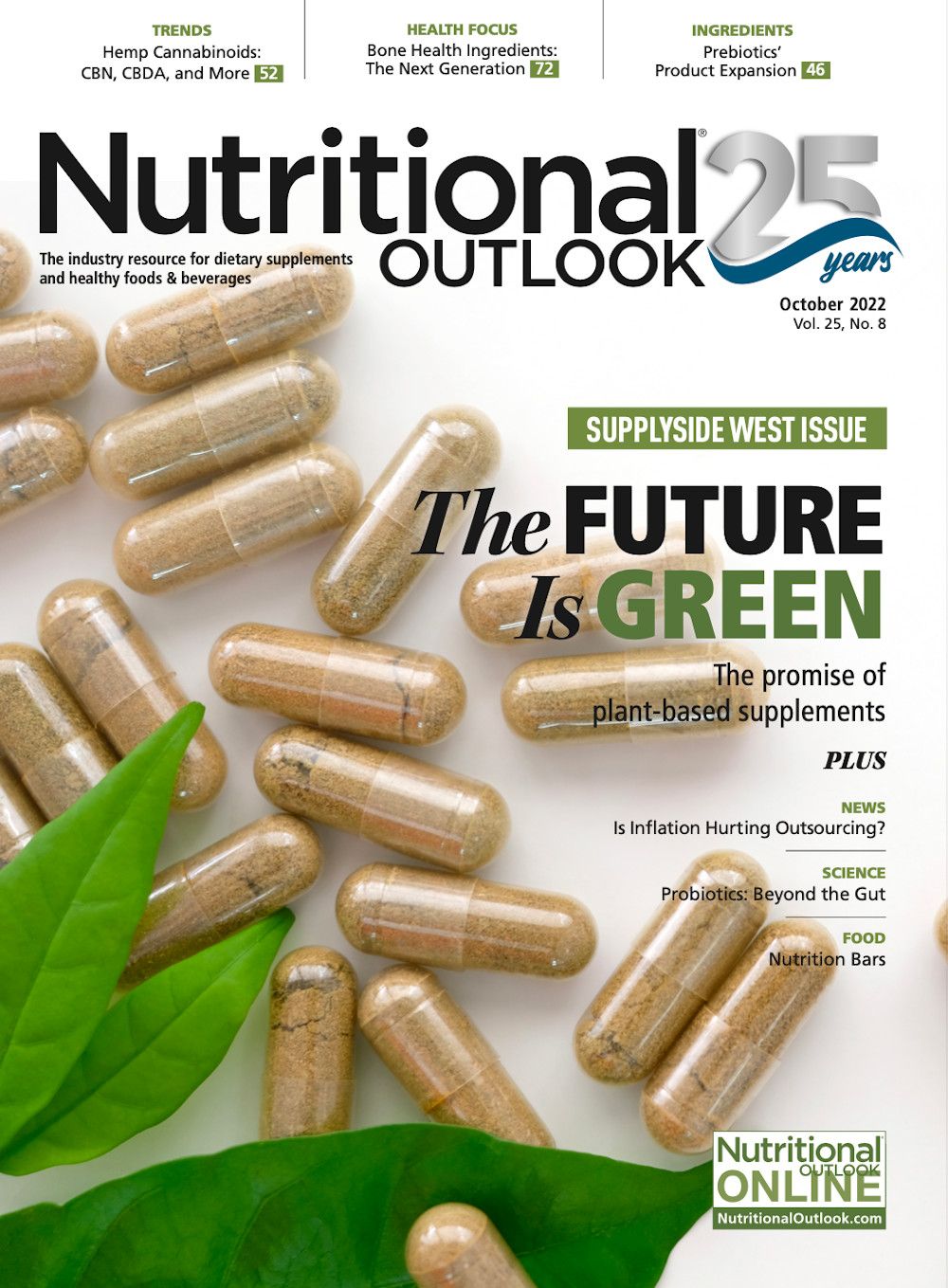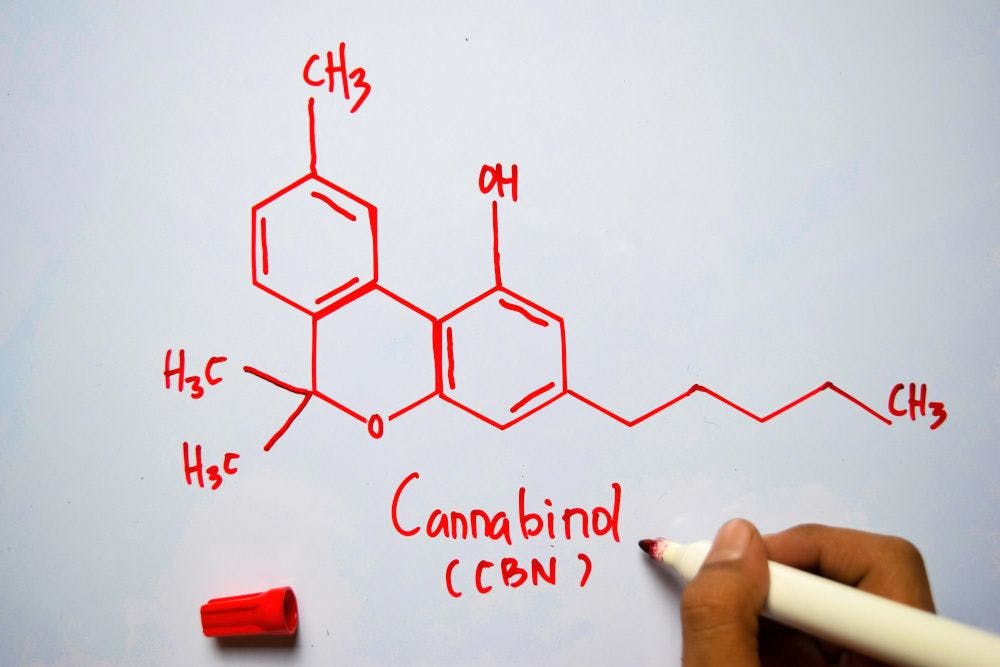Inflation: How are dietary supplement contract manufacturers dealing with inflation?
Leaders in dietary supplement manufacturing describe inflation-related struggles—and advise how companies can help themselves.
There’s an elephant in the room. It’s big and it’s scary. And although it hasn’t fully charged forward yet, since COVID began it’s been fanning and flapping its ears, demonstrating it means business.
The elephant in the room is inflation. And it’s not an animal that every contract manufacturer wants to publicly talk about. But whether publicly or privately, honest and necessary discussions are already taking place among contract manufacturers and their customers as inflation potentially leading to recession threatens to derail the global economy and cut into many industries’ profits worldwide.
Contract manufacturers in the dietary supplement and functional food industry are preparing for worst-case scenarios, just in case; shoring up best practices; and communicating with their customers to share concerns, help ease some fears, and find ways to lessen the potential pain of inflation all around.
Inflationary Impacts Are Not Inevitable…But Already Being Felt
Eugene Ung, CEO of Best Formulations (City of Industry, CA; recently acquired by Sirio Pharma Company, Ltd.), is one of those companies that is transparent about the problematic impact that rising prices are already having on businesses, observing that “inflation has impacted nearly all aspects of manufacturing.”
More specifically, Ung shares that for contract manufacturers, the main costs are raw materials and labor, and “both have increased significantly over the past couple of years,” he says. “It’s been a strong ripple effect starting with the higher costs of commodities, including energy, that have driven up raw material prices.”
In his dual position as executive vice president for the finished-product manufacturer and marketer, Twinlab Consolidated Corporation, and for NutraScience Labs (Farmingdale, NY), its contract manufacturing arm, Vincent Tricarico experiences inflation from two different sides. NutraScience Labs also serves as a contract manufacturer for brands not under the Twinlab banner.
From Tricarico’s perspective, “Input costs across the board are increasing. Not only are manufacturing costs on the rise, but so are the costs of running a business, purchasing office supplies, paying and retaining the employees that operate the machines,” and the list goes on.
Kapish Karan, research and development team leader of nutraceuticals for Ashland (Wilmington, DE), points to other considerations that also may not be obvious contributors to potential rising costs. Nonetheless they exist. For example, he points to the cost of product development, third-party certifications, and sample production as direct and indirect costs that have all increased.
As if those headaches weren’t enough, there’s more: “The cost of freight has increased many-fold, particularly ocean freight,” says Ung.
Casey Herlihy, procurement manager, Ashland, concurs. He advises that it’s important to select a contract manufacturer partner who can negotiate good freight rates based on economies of scale in order to help hold down prices for customers.
And Doug Grubbe, Ashland’s business manager of nutraceuticals, advises “we are seeing impacts to our supply chain, including disruptions in raw material supply and drastic increases in lead times for logistics.”
It’s all of these factors—and probably others, too—that lead Tricarico to recommend that “it’s become more important than ever before to make wise purchasing decisions.”
Not to Lay Blame, But COVID Started It
A global pandemic that has still not disappeared (and may, in fact, never do so) certainly didn’t help matters. Instead, COVID, in all its many iterations, was the impetus for rising costs and the foundation for greater inflationary pain that still may be to come.
The delicate dance of who pays for these originally unforeseen but now likely inevitable rising costs is not an easy conversation to have. It’s unlikely—and also probably unreasonable—to expect contract manufacturers—or consumers, for that matter—to absorb all of the cost increases. With inflation, there’s enough price pain to go around.
“The last thing you want to do is blindside your customers with a price increase,” says Tricarico. But the hard truth is that “you can absorb costs for only so long.”
In fairness, Tricarico expects, even advises, that in most cases customers “must continue to shop the marketplace and check to ensure the price you are paying is truly fair and market-driven.”
He reminds the industry that “relationships are a big part of maintaining good payment terms and fair price adjustments. Communicating honestly and openly with your customers during times like these is also crucial.”
As for Ung, he says that “it’s difficult to alleviate inflation-related pain.” He, too, is realistic when he explains that part of the pain has to be passed onto customers. “However,” he says, “open communication is a critical way to convey the bad news. There is not a single business-related expense that has not been impacted by inflation, so overall, there is understanding of the situation from customers.”
Grubbe observes that “inflation has impacted a wide range of costs, from raw material to labor, [from] packaging to utilities,” and that Ashland has seen “increases across the board.”
He adds, “These are real costs that impact our business, and we have had to pass these costs along to our customers, providing them as much transparency as possible to help them understand our current position.”
Like Ung, he credits his customers as being reasonable, advising that “of course, in most cases, customers are fully aware of these inflationary pressures as they are managing through similar circumstances.”
People Who Need People
No one is discounting the people factor and the critical role that having, or lacking, good employees adds to economic uncertainty for a company.
Attracting and sustaining a viable workforce is a key contributor to running a successful business, but as employees and potential employees have more leverage these days, at least here in the U.S., workforce concerns are looming as an inflationary marker.
In fact, Tricarico says that “the big issue I’m personally worried about is labor shortages. Anyone that has worked in this industry long enough knows that contract manufacturing is a team sport. The more cohesive and more experience your team possesses, the more value you’ll provide to your customers.”
According to Ung, “Wage inflation has also impacted all businesses, large and small, across all industries as well.”
Yet higher salaries are only one of the rising costs associated with pulling in and keeping the best available workforce. Employees are demanding better work/life balance. For example, the pandemic pushed people to rethink how much time they want to spend commuting.
Many decided going back to the office full-time is not an option, while others in fortunate financial positions chose to take a break from the workforce completely.
One of the upsides of the pandemic, if such a thing exists, was, as Grubbe puts it, “the strong demand in our business due to COVID.” But he points out, that benefit, in turn, exacerbated the impact of labor shortages.
“Over the past 24 months,” says Grubbe, “we have been substantially impacted by labor shortages and have had to adjust wages to be competitive and secure a reliable workforce.”
His colleague Karan agrees, noting that “labor turnover and shortages are still issues we face. Labor shortage means having to pay higher hourly wages, even for entry level positions.”
And it’s not just paying competitive wages that causes costs to rise. Karan drills down further, advising that “bringing in new people and getting them up the learning curve is still a cost. Because the labor market is tight, the pool of candidates tends to be less skilled than in prior years. As a result, it takes more time for training.”
Karan says that Ashland looks for ways to reduce “some of the inflationary pain felt by our own employees.” For instance, he says that “the company has put some programs in place to help retain employees and offset some of the costs related to higher gas prices.” The Catch-22 is that he further recognizes that “some of the cost of these programs will increase overhead costs and might ultimately get passed along to customers.”
Efficiency for Potential Cost Savings
Ung looks at automation as a long-term strategy to blunt the impact of labor inflation. He also urges for better forecasting, which he says “will also help manufacturers plan capacity and supply chain as well,” although he acknowledges “this is much easier in theory than reality.”
Efficiency is important to Grubbe, too. He advises that “we have been working to automate and streamline production to eliminate waste in our process to help improve our cost position, but we have seen limited opportunities to drive down direct costs.”
Still, Ashland is looking for other ways to help. “As is typical, we do continue to work to approve alternate sources of raw materials to help improve our leverage in price negotiations, but depending on the customer relationship this process can take some time,” he says.
Ung suggests that “companies will need to figure out ways to be more innovative [and] more efficient to combat inflation.” Further, he says that brands may go through SKU rationalization to really focus their efforts around their most popular and efficacious products, or even take the opportunity to reformulate.
Practicing Best Practices May Help
According to Tricarico, one way for contract manufacturers to get a handle on some costs is to think ahead about materials, such as bottles, plastic neck bands, and lids, as examples. “Having a good supply of these components on hand can help you avoid too many price fluctuations,” he says.
At the same time, Tricarico advises that “not over-purchasing is also critical as you don’t want to get stuck with high-cost inputs when the prices are going to come down.” He adds, “It’s a balancing act, but one that we’ve managed well because our team possesses over 120 years of industry experience.”
In the case of Ashland’s customers, Grubbe says that “we are seeing customers carefully managing their inventories, in some cases driven by retail de-stocking.”
These practices, in turn, help feed a beneficial contract manufacturer/customer relationship. “Understanding customer forecasts enables us to have better inventory management and optimize our raw material sourcing,” says Grubbe. “As a result, we can manage our inventory carrying costs more efficiently, only securing materials where we have actual demand and customer orders.”
Ashland’s procurement manager, Herlihy, weighs in. “Until recently, we had been locking in blanket orders to alleviate price increases on raw materials. Now we see some prices starting to come down. If suppliers are sitting on inventory or have extra capacity, they are reaching out to us to try to sell off that inventory or fill that capacity. Where we think prices will be coming down, we will start placing more spot orders,” he advises.
Herlihy adds that “It is too early to tell if some of these actions are due to a summer slump or if this is the impact of a possible recession.” One thing is for sure: Herlihy is looking forward to the face-to-face dialogue at November’s SupplySide West trade show where he expects to learn more from customers.
Although it might seem that contract manufacturers are worried, a better way to look at it is to consider whether you’re working with a contract manufacturer that accesses all angles of inflation and understands the signals of when inflation turns into a recession. Preparation is key.
“While raw material costs remain at elevated levels now, we also need to carefully watch for the inflection point where inflation does start to impact overall demand,” says Grubbe.
He adds, “One would expect this would drive raw material costs down, which makes it important to not be committed to higher-priced raw materials.”
Keep an Eye on Consumers
And where do consumers come in? Ung emphasizes his belief that “we’re all concerned about the impact of inflation on consumer discretionary products—which for some consumers, dietary supplements fall into this category.”
It’s not so much concern about long-time supplement users, who Ung says “will generally continue to use supplements, perhaps looking for most cost-effective brands, or downsizing.”
His bigger concern is with the newbies, those without the loyalty or long-term commitment to the products—especially those who will feel the economic pain most and have to make choices. “New consumers to the category might drop purchasing dietary supplements for other products if they are financially pinched,” says Ung. “Though we believe the health and wellness industry has a strong long-term consumer trend, high inflation does risk how loyal new dietary supplement consumers will be,” he adds.
This Too Shall Pass
The word overblown is not one that many are using when it comes to inflation warnings. So far, there doesn’t seem to be panic from contract manufacturers, though; just planning for a variety of scenarios and shoring up relationships with customers.
“In business, relationships are everything, and so long as everyone makes decisions with a long-term lens, it helps blunt the short-term pain felt by all,” advises Ung.
And he reminds us that “like other business challenges, the cream rises to the top. Since inflation impacts all companies, the strongest will typically survive and continue to grow.”
For his part, Grubbe reminds us that we’re all consumers. “As consumers,” he says, “we have seen firsthand the impact of inflation on our everyday lives, and this has heightened our attention to the impact of inflation on the profitability of our business.”
He recommends “that we watch the macro trends and understand how these will impact your business.”
For example, Grubbe notes that it’s important to assess where you will feel the pinch. These are some of the questions he suggests that companies consider: “Will you experience higher costs? Will demand for your product or service be impacted? Will demand remain strong, but you are unable to support it due to a critical raw material shortage?”
Once you’ve thought through the potential problems, Grubbe advises to “identify steps you can take to mitigate these risks as best as possible and with minimal negative financial impact to your business.”
That leads to Grubbe’s bottom-line advice: “Having a continuity plan in place should you start to see an impact to your business will allow you to pivot quickly and minimize the overall impact,” he says.
Herlihy remains a smidge more cautious, warning that “it’s too early to tell if inflation concerns are overblown. If a potential recession is looming, that could mean softness in the category.” And, he adds, “We are not out of the woods yet.”
Tricarico comments that “we are all feeling the squeeze in one way or another. However, like all things in life, this too shall pass. Until it does, though, I would advise brand owners to plan, prepare, know the demand for their products, and stay in constant communication with their contract manufacturers.”

Prinova acquires Aplinova to further increase its footprint in Latin America
April 7th 2025Prinova has recently announced the acquisition of Brazilian ingredients distributor Aplinova, which is a provider of specialty ingredients for a range of market segments that include food, beverage, supplements, and personal care.























